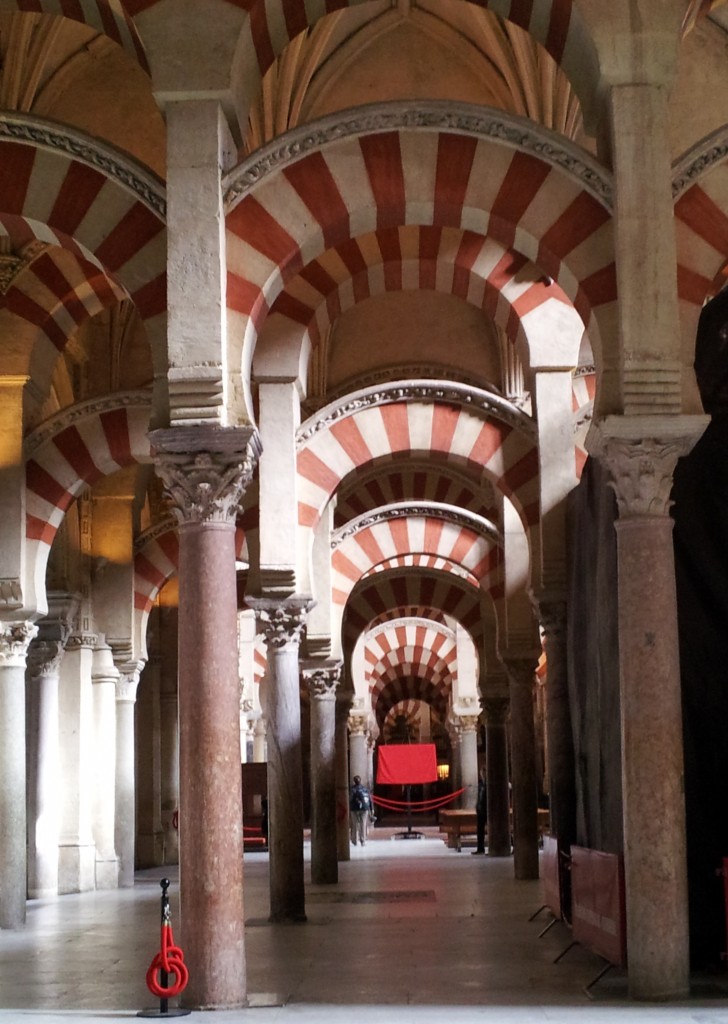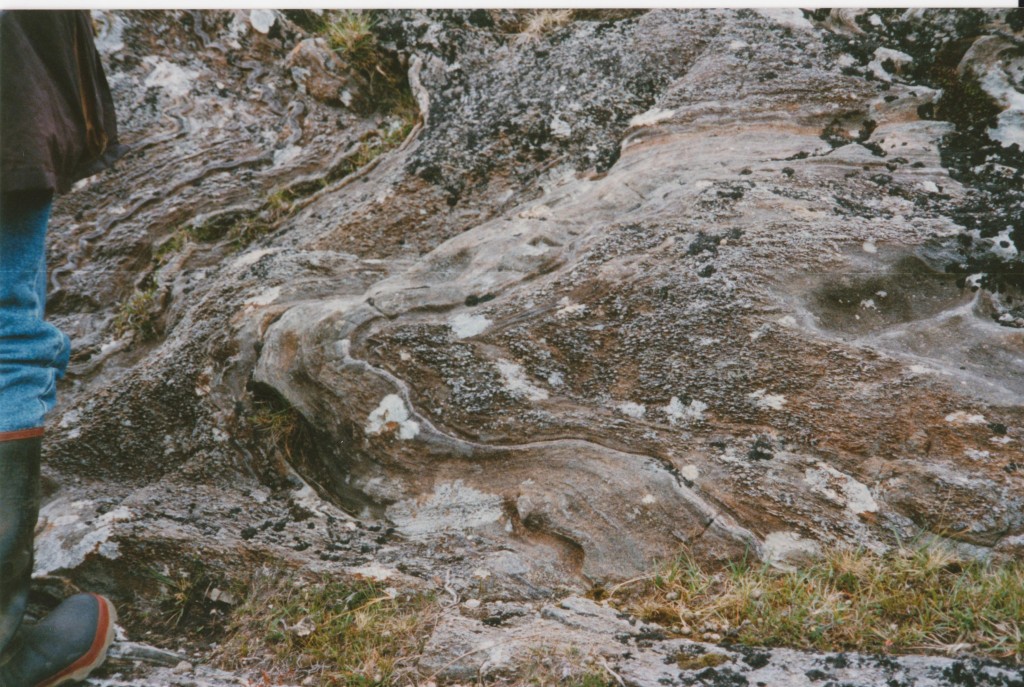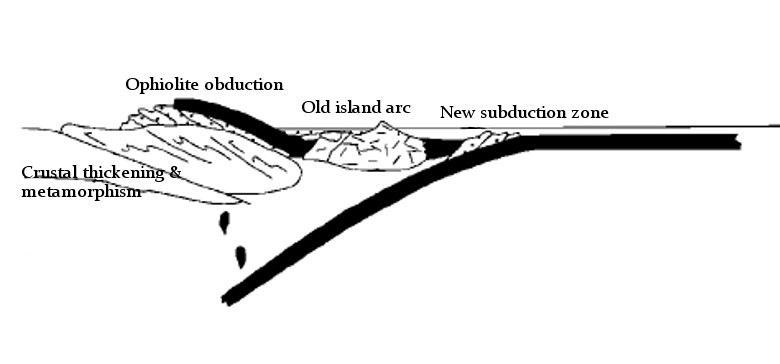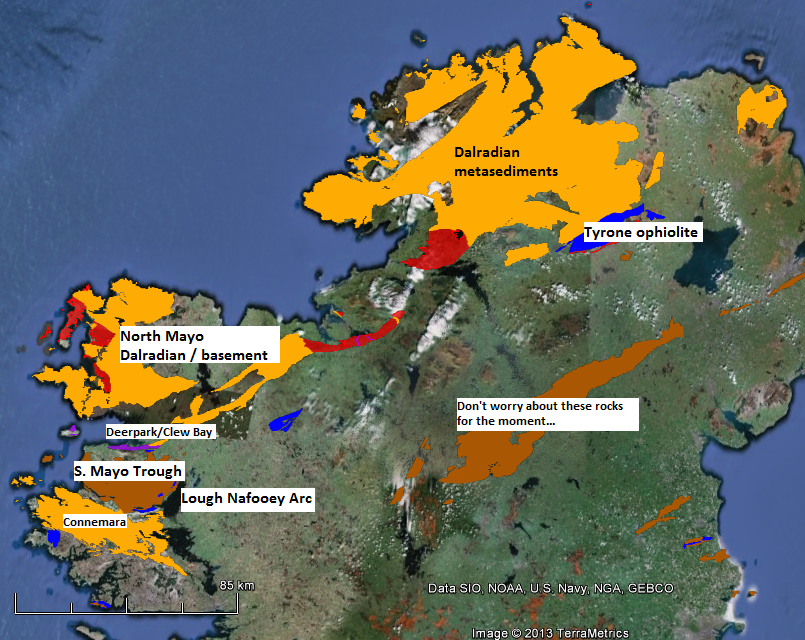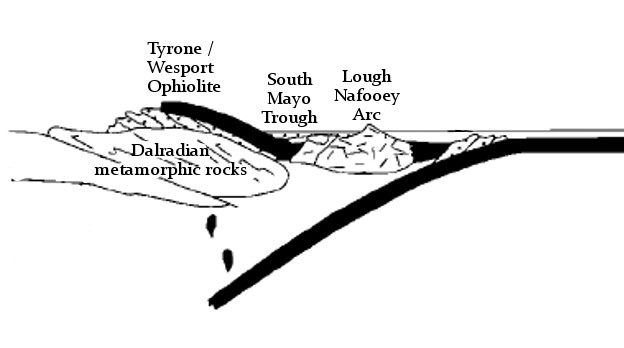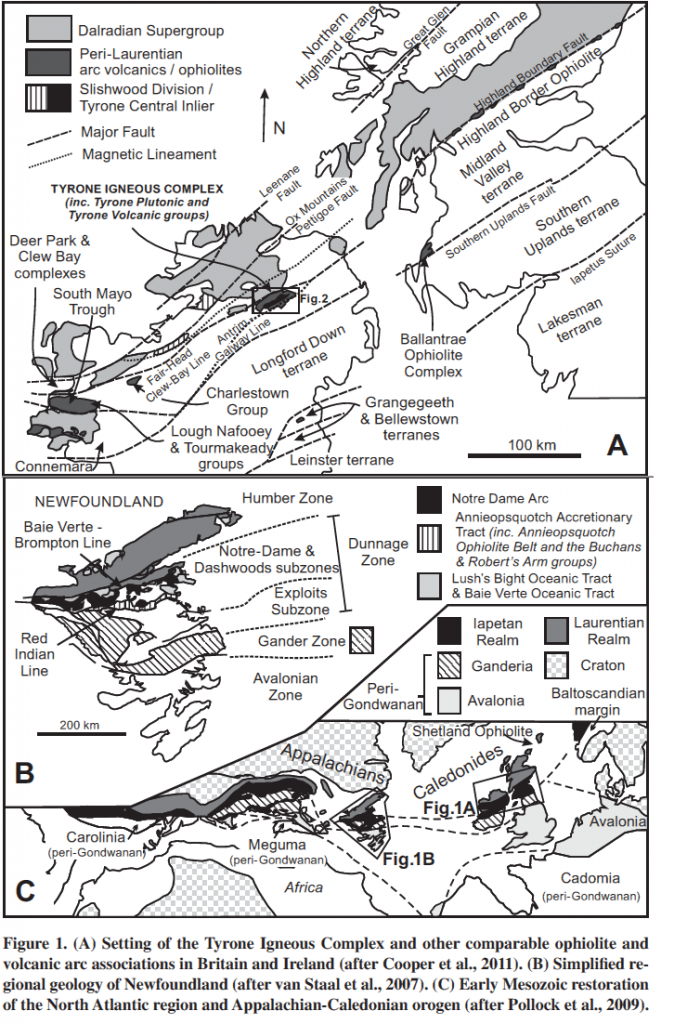Andalucia is a province in Spain, at the far south west of Europe. Its long and varied human history has seen it linked to the middle East, north Africa and the Americas. The creation of these links brought new foods, metals, diseases: new stuff into Andalucia. Sometimes the impact of arrival created ripples that reached out far across the world.
Geological history
Some 200 million years ago Andalucia was within a massive continent called Pangea, close to both Africa and North America. Slowly Pangea broke into pieces, a new ocean basin – the Atlantic – filling the gap as the Americas drifted away. Some 50 million years ago, Africa was pushed north in Europe creating a long mountain range. Andalucia was part of this. Mountains form when the crust is thickened, pushing rock into the sky. A similar process at the base of the lithosphere 1 also forms a thick balancing ‘root’. Under Andalucia, this thick root ‘fell off’2 and sank into the hot convecting mantle beneath.
Mountain belts are surprisingly fragile. The sudden removal of the heavy root caused the over-thickened crust to collapse, flowing sideways and bringing deeply buried rocks up to the surface3. Fragments of mantle called peridotite, not often seen at the surface, form brown mountains around the town of Ronda. The collapse of the mountain belt went so far that its centre is now the very western part of the Mediterranean, the Alboran Sea. The mountain became a great hole in the ground.
Most of Andalucia is made up of sedimentary or metamorphic rocks folded and twisted by these dramatic changes. An exception is the basin of the Guadalquivir river. Here the weight of the collapsing rocks pushed down the rocks to the north, making a depression that has filled with recent sediments – a feature called a foreland basin. The edge of this flat basin makes a clear line that is easily visible from satellite views of Southern Spain.

Andalucia from Space. Image from Wikimedia
People
People, at first hominins such as Neanderthals, have lived in Spain for over a million years. The little we know of prehistoric humans comes from their use of materials. First their gradually more sophisticated use of stone tools, then from about 5000 years ago the smelting of metals: first copper, then bronze (copper plus tin) and then iron. Mines in Andalucia have been been involved since the start, notably the Rio Tinto area. Here a Carboniferous massive sulphide deposit has yielded silver, gold and copper and spawned a global mining company.
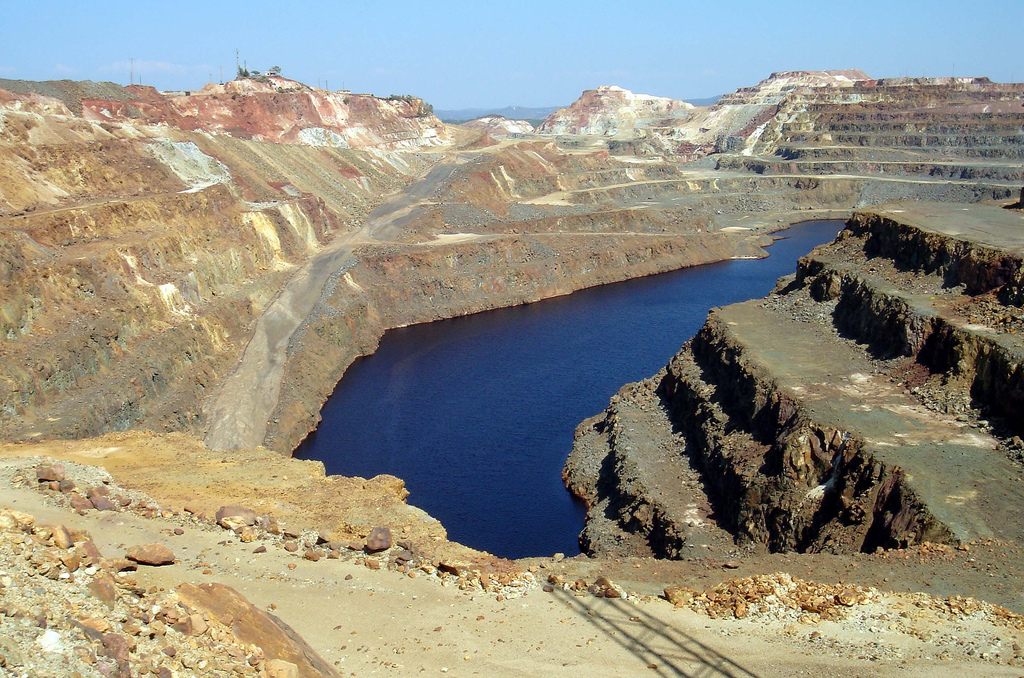
Rio Tinto mines, Andalucia. Image from David Domingo on Flickr under CC
Around 3000 years ago (1100BC) the Phoenicians reached Andalucia, founding the town of Cadiz. A culture that reached across the Mediterranean they were also involved in trade with the British Isles. Tin from Cornwall in England was smelted with Spanish copper and the resulting bronze traded on. The olive tree reached Spain at this time, brought from the eastern Mediterranean.
A mere thousand years later, the Romans took control – their province of Hispania Baetica covers much of modern-day Andalucia. They introduced deep mining to the Rio Tinto, using the characteristically Roman combination of slaves and very big wheels to pump water up from the depths. Andalucia was a renowned source of many products for the wider Roman Empire, including silver, olives, emperors, philosophers, dancing girls, and garum, a sauce formed from fermented fish guts rich in umami flavours.
Yet Moor invaders
After the slow collapse of the Roman Empire, the next major influx of change in Andalucia was the Moorish invasions. The Islamic Moorish army4 conquered most of Spain between 711 and 718 AD, in time creating a kingdom of Al-Andalus with its capital in Cordoba. Once more Andalucia was part of a multi-national empire with good trade links. Valuable crops from further east, such as figs, citrus and pomegranate were introduced for the first time, as were sophisticated irrigation systems, some of which are still in use. By the 10th century, Cordoba was the most civilised city in Europe, it’s Grand Mosque was one of the wonders of the Muslim world.
The site of the Grand Mosque was originally a Christian cathedral (before that, a Roman temple). Built over 200 years and funded in part by mining proceeds, the Mosque was built with local stone and brick, but also recycled Roman stone columns. Some of these were found locally, but others were brought in from much further afield, from the rest of Spain and perhaps wider.
The Columbian exchange
Eventually Moorish Spain came to an end as Christian rulers conquered the Muslim lands. The final Moorish kingdom of Granada fell to Ferdinand and Isabella in 1492, the same year that they sponsored Christopher Columbus to mount an exhibition across the Atlantic. As the Spanish kingdoms turned into a global Spanish empire, lots of incredible things started flowing back into Andalucia. First Seville and later Cadiz were the main ports for the Atlantic trade. Gold and silver beyond imagining passed through Andalucia – enough to create a century of inflation across Europe. Some of this stuff ended up in the the Grand Mosque in Cordoba, which is now a cathedral again. Sitting within the vast pillared area of the mosque is a Christian church full of beautiful things made of American gold and silver. The choir stalls are made of American mahogany – lots of plant material crossed the Atlantic too.
A popular Spanish dish is called ‘patatas bravas’ and consists of potato, tomato and chili – all foodstuffs that spread across the world following the ‘discovery’ of the Americas. Andalucia was the first stop for many of these vegetable treasures. Botanical gardens turned seeds into plants, to be studied and propagated. A fine building in Seville is the old tobacco factory, dedicated to processing another new crop. The setting of Bizet’s opera Carmen, its walls are mottled with yellow and brown, like a smoker’s fingers. More immediately bad for the health, syphilis was first recognised in Europe in 1494, most likely brought back by Columbus’ sailors.
The British dimension
As an Englishman who likes history, I often visit other countries in an apologetic mood. A dimly remembered story about Francis Drake daringly ‘singeing the king of Spain’s beard’ is rather less jolly when you are sitting in Cadiz, the town that was attacked. Drake was engaged in warfare on behalf of his Queen, but also behaving like a pirate, raiding Spanish treasure ships. Still, no one seems to mind any more; it was in 1587 after all.
The British drink everything and anything. Not content with home-grown beer, gin and whisky we also crave grape-based booze. When Francis Drake returned from attacking Cadiz, he brought 2,900 barrels of sherry, a type of wine made only near Jerez in Andalucia. This went down rather well – we’ve been drinking it ever since, even getting involved in its manufacture.
Tonic water is sweet fizzy water flavoured with quinine, best taken with gin. Quinine, an extract from a South American tree was for centuries the only effective way of countering the effects of malaria. First popularised by Spaniards returning from Peru it was introduced to gin by the British in India. In the early 18th century the Royal Navy had a number of bases on Spanish soil, including in Andalucia, and passed the habit on. It remains popular in Spain to this day.
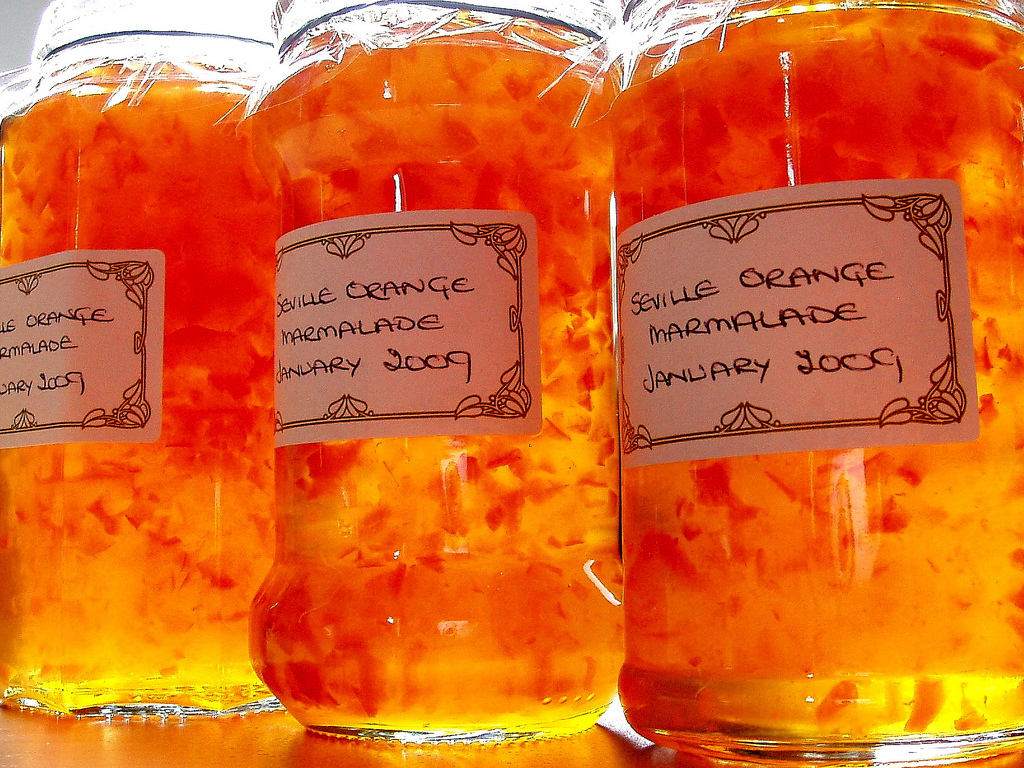
Image from Amanda Slater on Flickr under cc
A final anglo-Spanish connection is marmalade. Seville is full of orange trees, of a particular kind, bitter and rich in pectin. They are pretty inedible raw, but for some reason 5A Scottish tradition and industry grew up of preserving them as jam, with pieces of the skin floating in jars of pungent and yielding orange delight. Paddington Bear, James Bond and Alice in Wonderland all eat marmalade, along with many real people, such as me. The bitterness gives it a very grown-up feel, with some of the grimy delight of cigarettes and whisky, but in a healthy breakfast-friendly form.
The future
What of the future? Recent research suggests that soon6The oceanic crust beneath the Atlantic will start to plunge down under Spain into the earth’s mantle. The collapse of the mountain belt I mentioned at the beginning left a tear in the crust and this may grow and extend into a full-blown subduction zone. This will bringing volcanoes to fertilise the soil with ash and earthquakes to shake the buildings (if any remain). As slowly as finger-nails grown the Atlantic will vanish and Spain and the Americas will be reunited once again.

